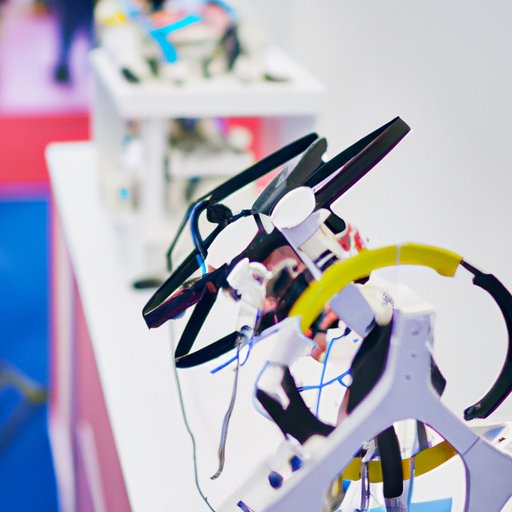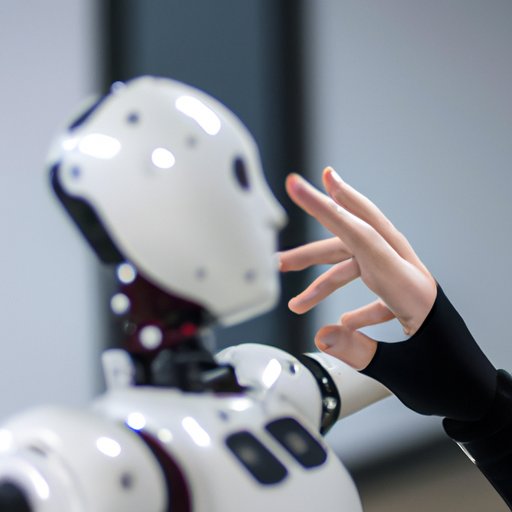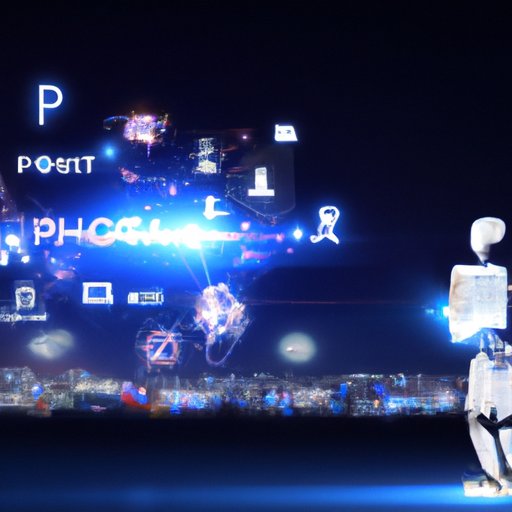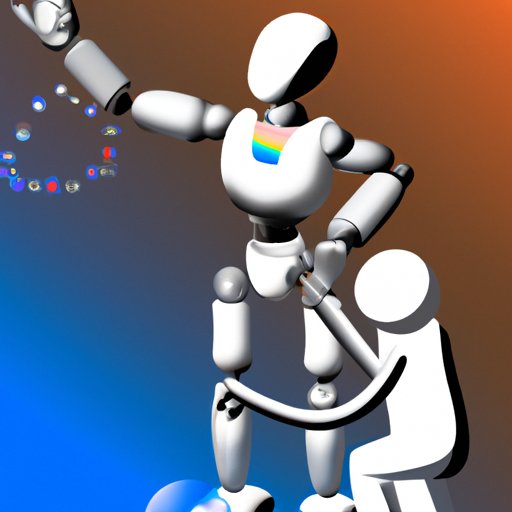Introduction
Robotics is a field of technology that focuses on the creation of machines capable of performing tasks autonomously or semi-autonomously. As robots become increasingly advanced, they are being used in a wide range of applications, from manufacturing to healthcare. But what will robots look like in the future? This article examines the latest advances in robotics technology, explores the possibilities of humanoid robots, looks at how artificial intelligence (AI) is transforming robot design, and considers the impact of automation on the evolution of robots.

A Look at the Latest Advances in Robotics Technology
Recent advances in robotics technology have enabled robots to perform a variety of tasks with increasing levels of sophistication. According to research from the International Federation of Robotics, the global market for robots is expected to reach $87 billion by 2025. This growth is driven by the development of new technologies and an increasing demand for automation in various industries.
Trends in Robotics Design
The trend in robotics design is towards smaller, more agile robots that are able to maneuver in tight spaces and perform complex tasks. For example, robotic arms are being designed to be more flexible and able to move in multiple directions. The use of sensors and cameras allows robots to interact with their environment and respond to changes in their surroundings.
Current Applications of Robotics
Robots are currently being used in a variety of industries, including healthcare, manufacturing, agriculture, logistics, and entertainment. In healthcare, robots are being used to assist with surgeries and other medical procedures. In manufacturing, robots are used for assembly line tasks, such as welding and painting. In agriculture, robots are being used for tasks such as crop harvesting and soil analysis. In logistics, robots are being used for warehouse operations and delivery services. And in entertainment, robots are being used for interactive experiences such as theme park attractions and virtual reality games.

Exploring the Possibilities of Humanoid Robots
Humanoid robots are robots that are designed to resemble and interact with humans in a natural way. These robots can be used for a variety of applications, from assisting with everyday chores to providing companionship. However, there are still several challenges that need to be addressed before humanoid robots can become commonplace.
Potential Uses of Humanoid Robots
Humanoid robots could be used for a variety of tasks, such as providing assistance to elderly people, helping with household chores, providing companionship, and even providing medical care. For example, a robot could be programmed to remind a person to take their medication or to provide emotional support during difficult times.
Challenges and Limitations
Despite their potential, humanoid robots still face several challenges. One of the biggest challenges is creating robots that are able to interact with humans in a natural and intuitive way. Additionally, humanoid robots must be able to recognize and respond to human emotions and gestures. Finally, robots must be able to safely navigate their environment and avoid obstacles. Until these challenges are addressed, humanoid robots will remain limited in their applications.
How AI is Transforming Robot Design
AI is playing an increasingly important role in robot design. AI enables robots to learn from their environment and adapt to changing conditions. This makes robots more efficient and capable of performing complex tasks that would otherwise be too difficult for them.
Understanding Artificial Intelligence
AI is a branch of computer science that deals with creating intelligent machines that can think and act like humans. AI systems are composed of algorithms that process data and make decisions based on the information they receive. AI is used in many areas, such as natural language processing, computer vision, and autonomous vehicle navigation.
Benefits of AI in Robotics
AI has several benefits when it comes to robotics. AI enables robots to learn from their environment and adapt to changing conditions. This makes robots more efficient and capable of performing complex tasks that would otherwise be too difficult for them. Additionally, AI allows robots to interact with humans in a more natural way, enabling them to understand human emotions and gestures.
The Impact of Automation on the Future of Robotics
Automation is playing an increasingly important role in the development of robots. Automated machines are capable of carrying out tasks with greater speed and accuracy than humans, making them ideal for repetitive or dangerous jobs. However, there are still ethical considerations when it comes to the use of automated machines.
Automation’s Role in Robotics Development
Automation is playing an important role in the development of robots. Automated machines are able to carry out tasks with greater speed and accuracy than humans, making them ideal for tasks that require precision and consistency. Additionally, automation reduces costs, increases efficiency, and eliminates the need for human labor.
Ethical Considerations of Automated Machines
The use of automated machines raises ethical concerns, such as whether robots should be given the same rights as humans. There are also questions about the safety and reliability of these machines, and how they might be used to infringe on the privacy and autonomy of individuals. These issues need to be addressed before automated machines can become commonplace.
What Will Autonomous Machines Look Like?
Autonomous machines are robots that are capable of operating independently without any human intervention. Autonomous machines are expected to play an increasingly important role in the future, with some experts predicting that they could replace human workers in a variety of industries.
Predictions for Autonomous Machines
Experts predict that autonomous machines will become increasingly sophisticated over time. They will be able to learn and adapt to their environment, allowing them to carry out more complex tasks. Additionally, they will be able to interact with humans in a more natural way, using facial recognition and voice commands.
Possible Issues with Autonomous Machines
Despite their potential, there are still several issues that need to be addressed before autonomous machines can become commonplace. One of the biggest concerns is the potential for these machines to be used for malicious purposes. Additionally, there are ethical considerations when it comes to the use of autonomous machines, such as how they might be used to infringe on the privacy and autonomy of individuals.

How Robotics Are Changing the Way We Live
Robotics are becoming increasingly prevalent in our everyday lives, from factory floors to our homes. While robots can help improve productivity and efficiency, they can also have both positive and negative implications.
Examples of Robotics in Everyday Life
Robots are being used in a variety of ways, from manufacturing to healthcare. In manufacturing, robots are used for tasks such as welding and painting. In healthcare, robots are being used to assist with surgeries and other medical procedures. Additionally, robots are being used in transportation, logistics, and even food preparation.
Positive and Negative Implications
Robots can have both positive and negative implications. On the one hand, robots can help increase productivity and efficiency. On the other hand, robots can lead to job losses, as they are able to perform tasks that were previously done by humans. Additionally, robots can be used for malicious purposes, such as spying or hacking.
Conclusion
The future of robotics is an exciting one, with robots becoming increasingly advanced and capable of performing a variety of tasks. In the coming years, robots are expected to become smaller and more agile, with AI playing an increasingly important role in their development. Additionally, robots are expected to become more autonomous, with the potential to replace human workers in a variety of industries. As robots become more prevalent in our lives, it is important to consider the ethical implications of their use.
(Note: Is this article not meeting your expectations? Do you have knowledge or insights to share? Unlock new opportunities and expand your reach by joining our authors team. Click Registration to join us and share your expertise with our readers.)
